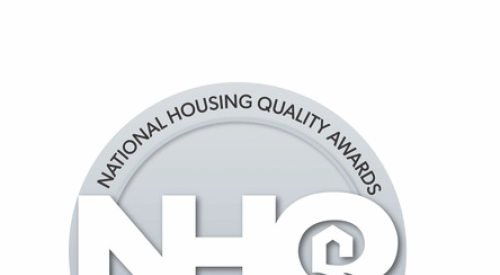|
Recognizing and removing low-value activities or cost-only factors are as vital to a company's success as having a clear vision, a good process map and efficient documentation. Kaizen, also known as lean manufacturing, is an effective tool for trimming corporate fat. It's a continuous-improvement technique that has an excellent track record in manufacturing environments and involves challenging existing procedures for their cost-effectiveness as well as compliance.
The challenge begins by having a cross section of employees examine, for a short but dedicated time, a specific problem to find an alternative process-improvement solution. Teams are empowered to test their alternative approaches and manage the changes for improvements (see figure).
For the past decade, Kaizen was a tool of choice in the automotive industry. It unfortunately has taken a back seat to Six Sigma unfortunate because both tools have different strengths to offer an organization and should be used to complement each other. Not all parts of either process are needed by an entire organization. Selecting the best from both will help your company achieve better management and better results.
Building Innovation Agility and Breakthrough Capability
Six Sigma is "the tool bag" for measuring continuous improvement. All the tools have existed for decades under different names. Each tool's individual value is well-demonstrated. The most common understanding of Six Sigma is that it applies a performance-based approach to process improvement. It is an analysis approach to achieving excellence with pre-defined performance target levels.
The most famous target and the basis of the name is a statistically defined target of virtual perfection, Six Sigma. In statistical measurement of defects, a process operating at a "Six Sigma" level of stability typically yields no more than 3.4 defects per million opportunities. That translates to 99.9997% perfection. Six Sigma adherents often ask if 99.9% is good enough and then present statistics that demonstrate that in many instances it is not. For example, at 99.9%, 20,000 pieces of mail would be lost every hour, 500 incorrect surgical operations would take place every week, and two airplanes would have a long or short landing every day at major airports.
Six Sigma experts state, and rightly so, that quality actually costs less for organizations. They relate the cost of quality, as a percentage of revenue, to the sigma level at which an organization performs (see table).
|
||||||||||||||||||||||||||||
It is a fair assumption that the fewer the defects, the lower the number of replacements, the less time needed to achieve a consistent quality product delivered to customers, the lower the cost of material or people's time, the lower the management and supervisory time, etc.
Six Sigma is practiced, like Kaizen, through teams, but with a longer time frame. A team that looks at and improves a problem with an eye to Six Sigma performance targets invests a great deal of time on measurement and data analysis. Before adopting Six Sigma, investigate others in your industry that use it. In addition to the time investment, there is a strong dependence on the quality of the process measurement data needed.
Implementing a Six Sigma improvement program can pay off in other ways:
- Customer specifications become much clearer.
- Actual ability to meet such specifications also becomes clear and can be used to improve marketing focus, product pricing or cost assignment.
- Other decisions are better supported with the data and facts that teams can bring to the decision.
- The rigorous teamwork skills are transferable to other operations.
- Products can be made better, less costly and easier to guarantee.
Management Measures That Make a Difference
How does a firm get into the fast lane of the road to management excellence? The process typically takes a company through three steps:
1. Assessment or gap analysis. Also called a management system audit, this identifies what management excellence means for your organization and how far your company is from achieving it. It helps managers identify and validate what the company does well and what causes it to happen consistently. It also reveals key challenges and what drives the roadblocks to success so consistently. The self-assessment step is usually best done by or in conjunction with a third party who is not at all vested in the status quo and can be unbiased when assessing strengths and weaknesses particularly against powerful criteria such as Baldrige. The third party also can deal with "we've always done it this way, why change?" and seek alternatives that might be more effective.
2. Plan upgrades of the management system. In most cases, it requires years to achieve management excellence. You will, however, begin seeing improvements within weeks if the company implements the following five components:
The other ingredients, such as customer relationship management and care, Baldrige criteria for self-assessment, Six Sigma, lean manufacturing and others as appropriate, are folded into the five components. The key is to take only what is needed from each to meet your needs.
3. Implementing the changes. This is by far the most difficult part. Success depends on commitment by the entire organization and management fortitude to implement changes. You also need to track your improvements against key benchmarks regularly and continually re-evaluate and modify your company's performance according to evolving goals and objectives. You need to assign someone to manage the change process with top management's involvement.
Navigating the fast lane on the road to management excellence is not for the fainthearted. It takes skill, stamina and determination. It also takes the support of top management, experience and wise counsel. Before accelerating toward any performance management overhaul, conduct a management system audit and consult a professional.
Serge Ogranovitch is president of The Potomack Group, a Vienna, Va.-based management consulting firm specializing in supporting national and global entities to help improve the way they do business. He has worked in more than 67 countries providing management expertise based on years of experience with multinational staff and management styles. He has incorporated ISO, Six Sigma, Baldrige and other tools into client management systems.










